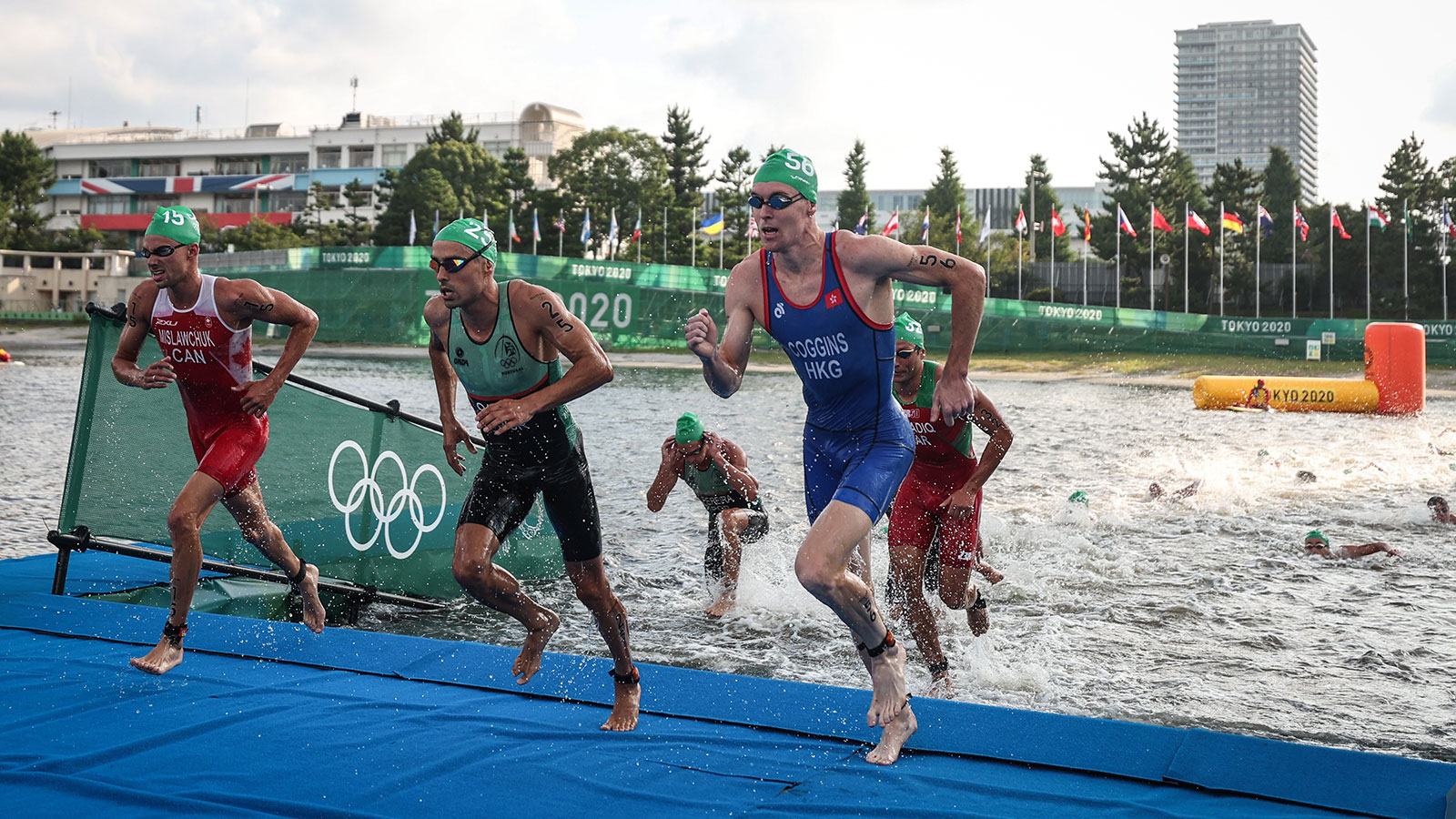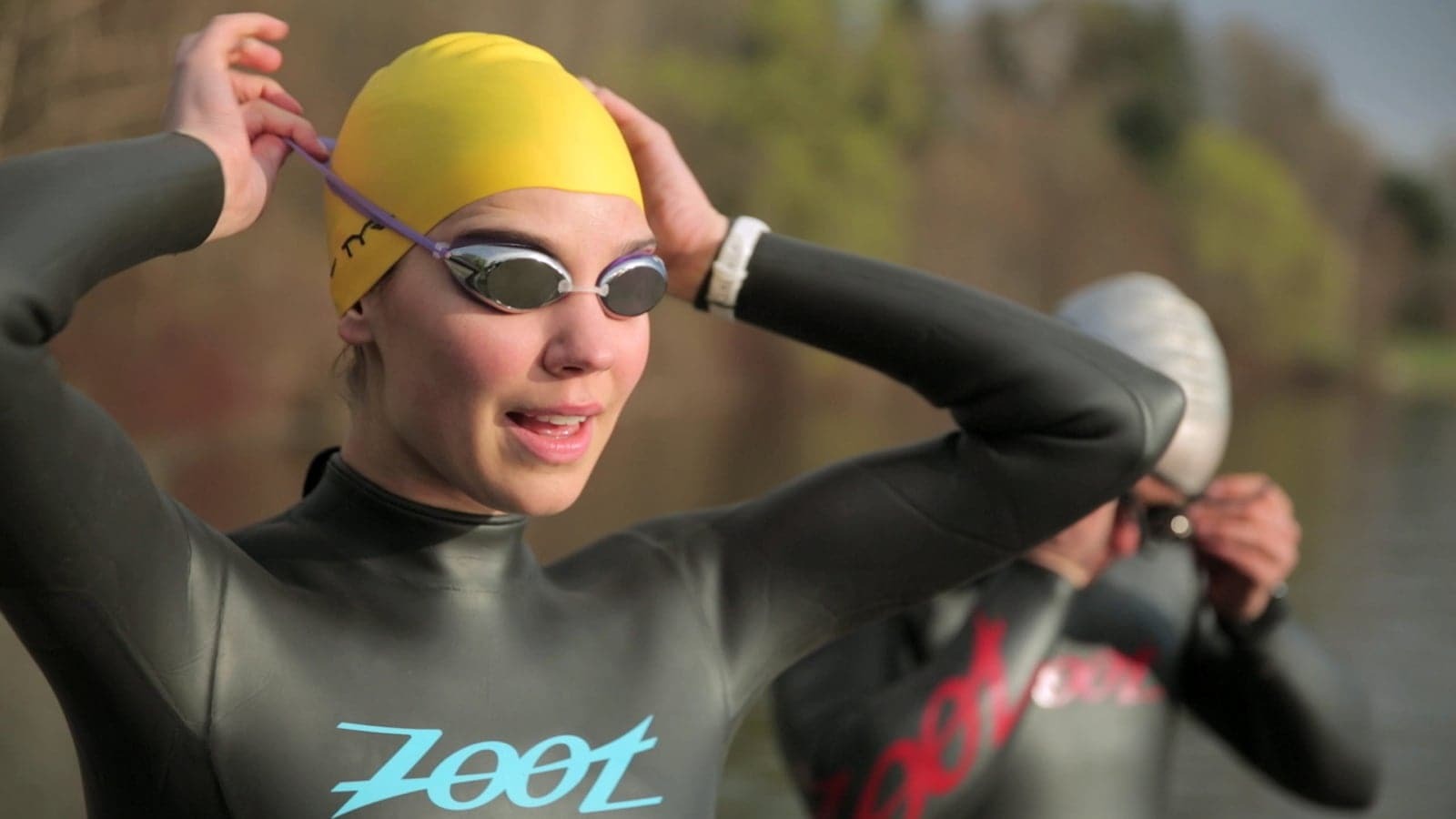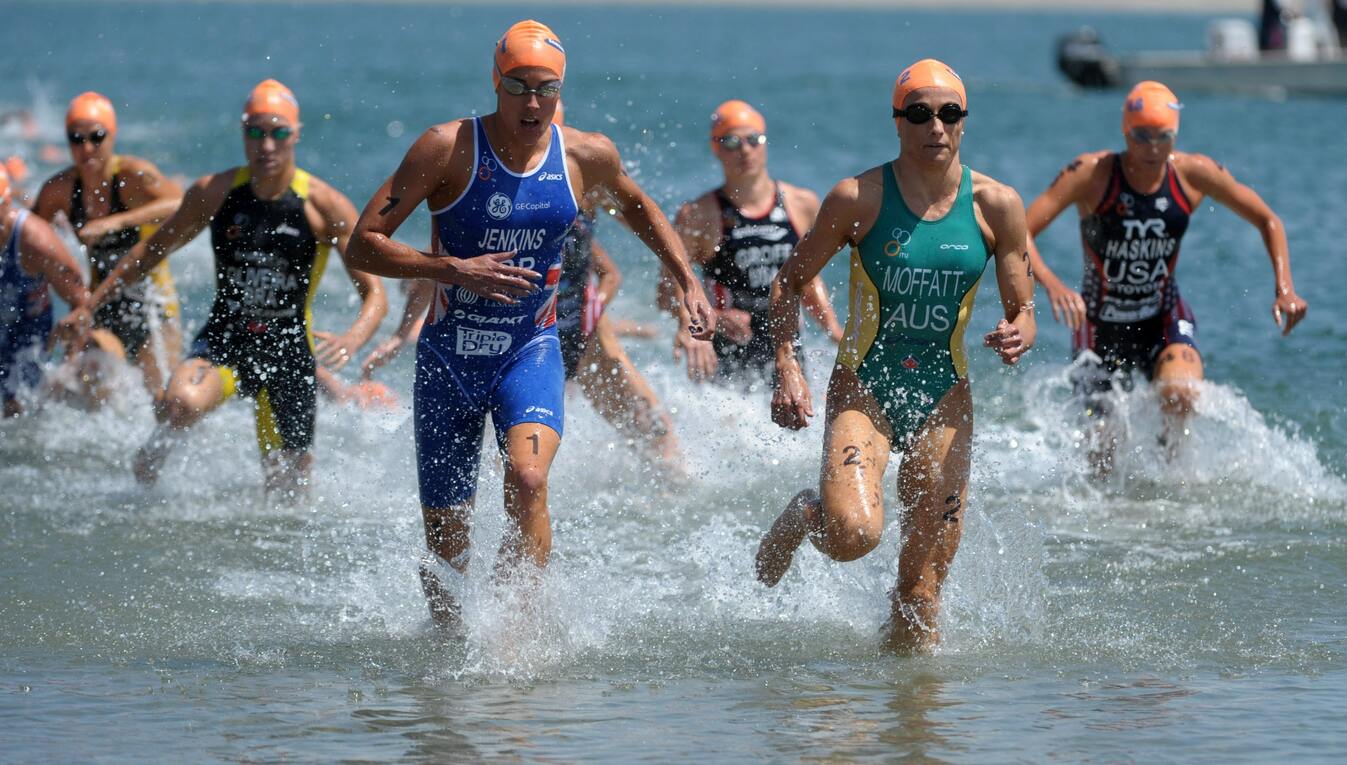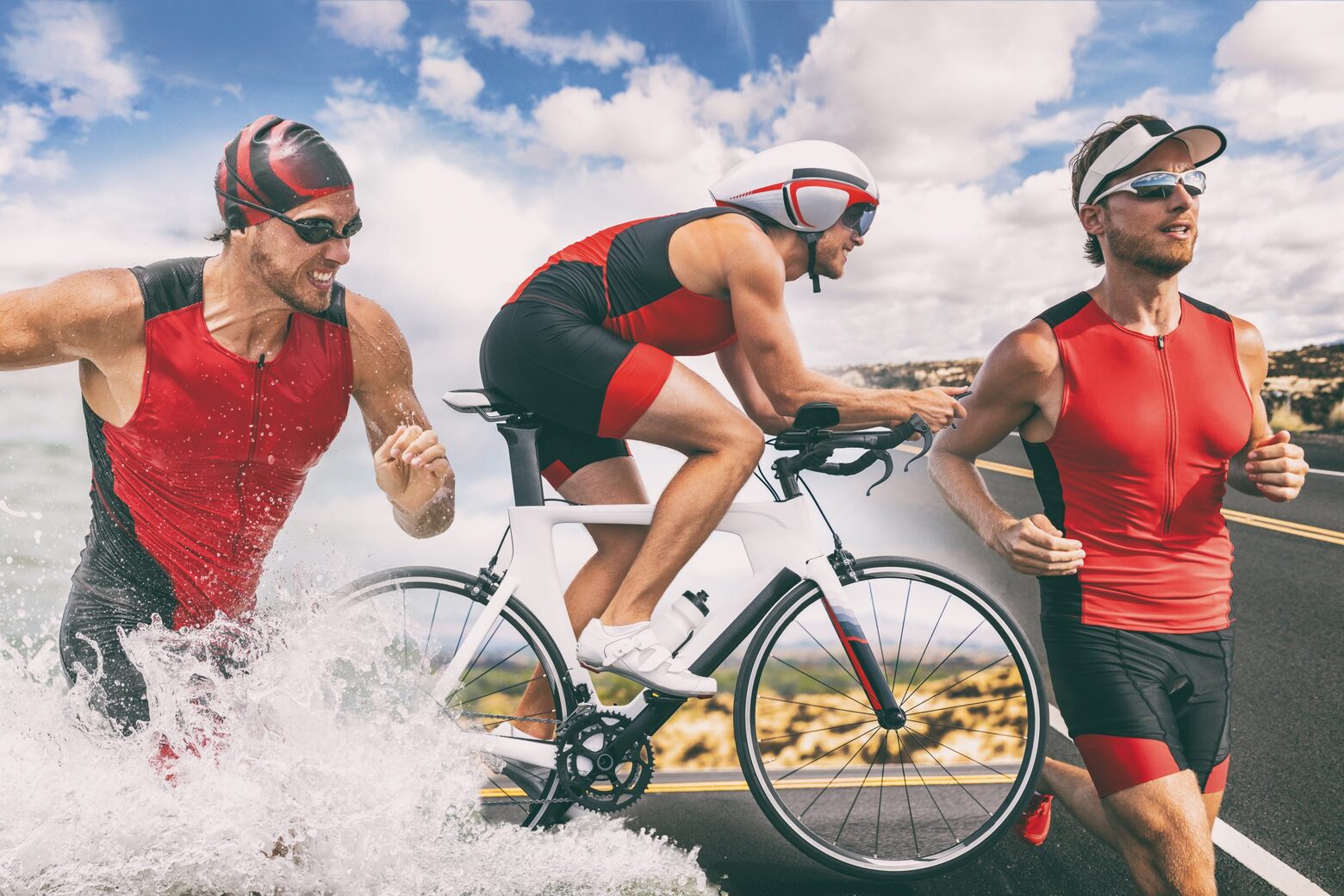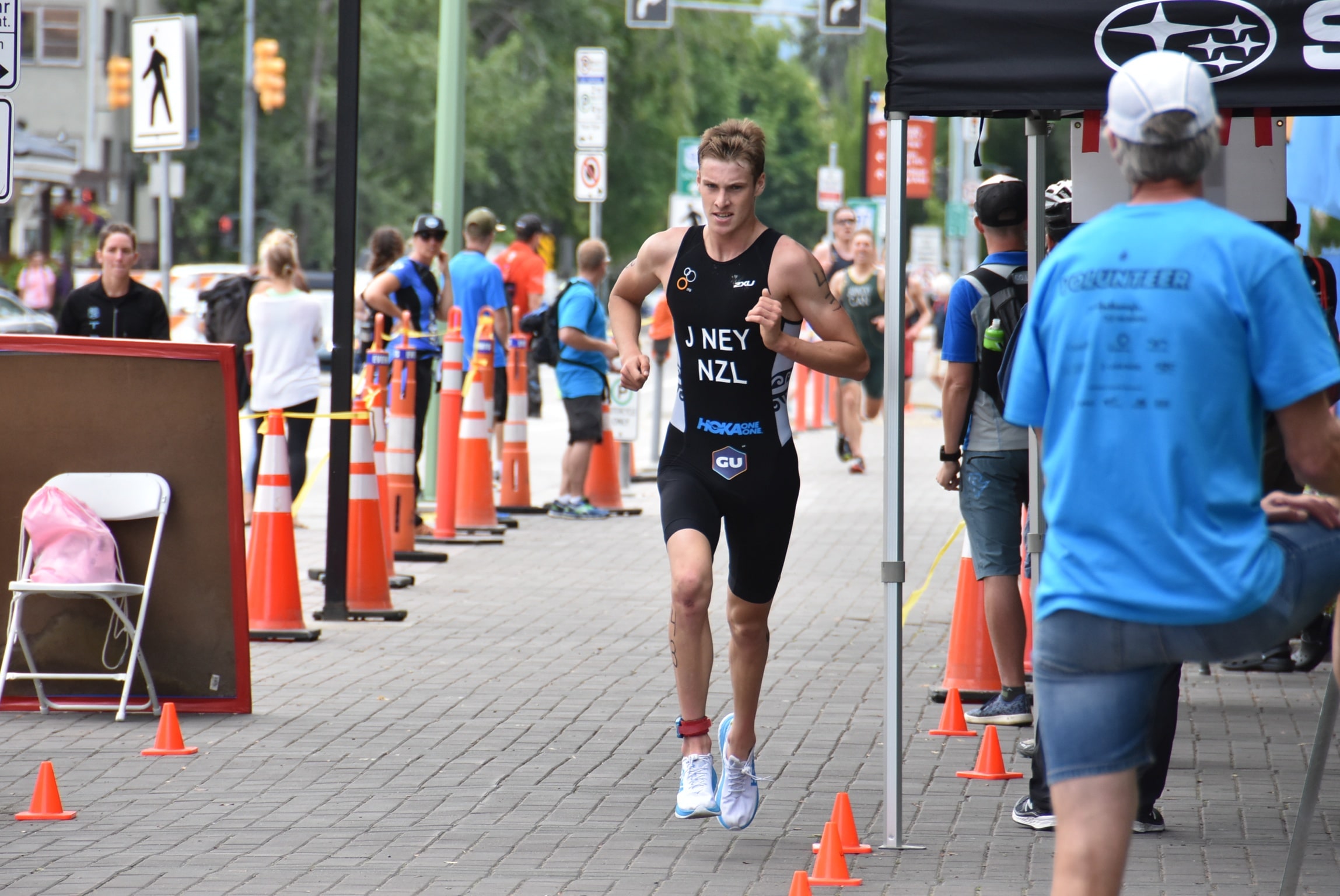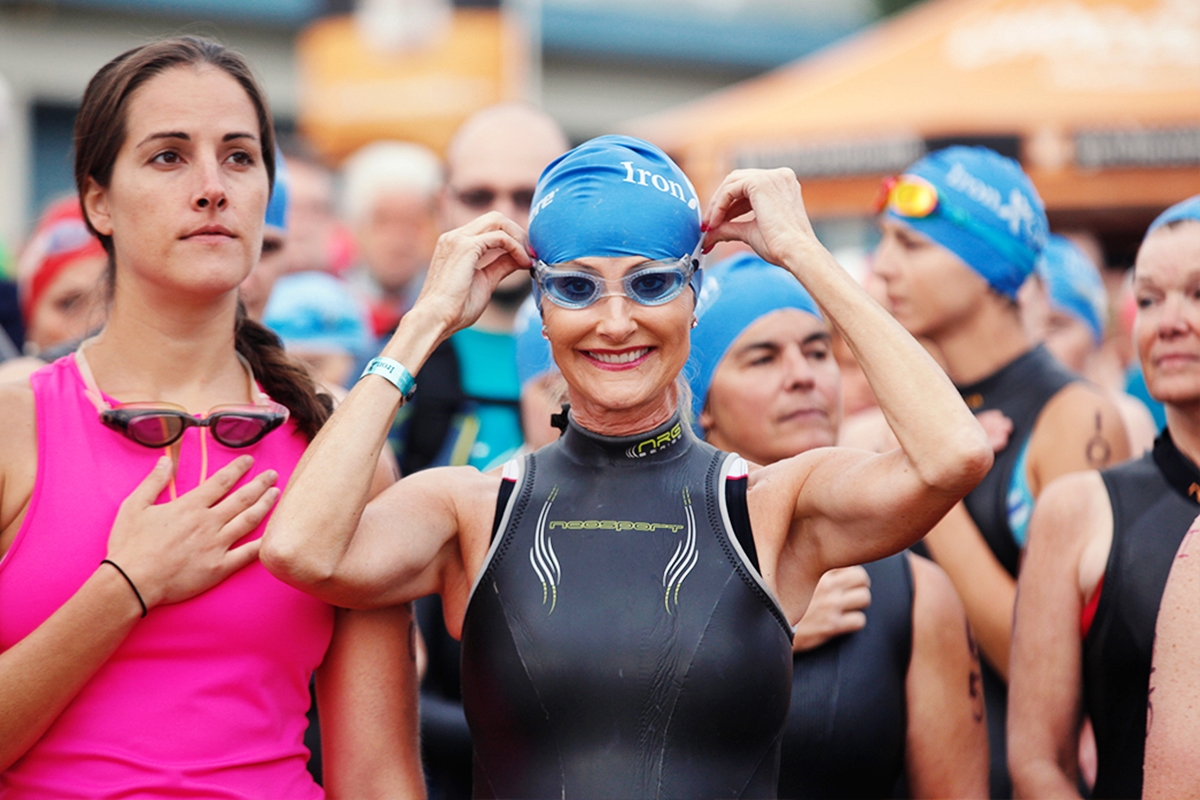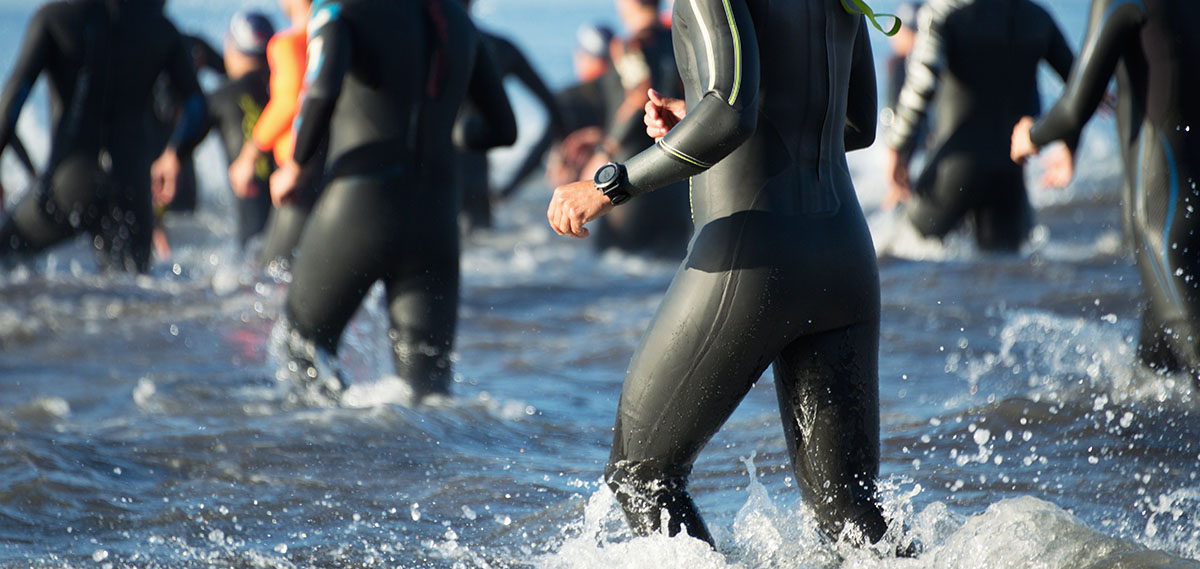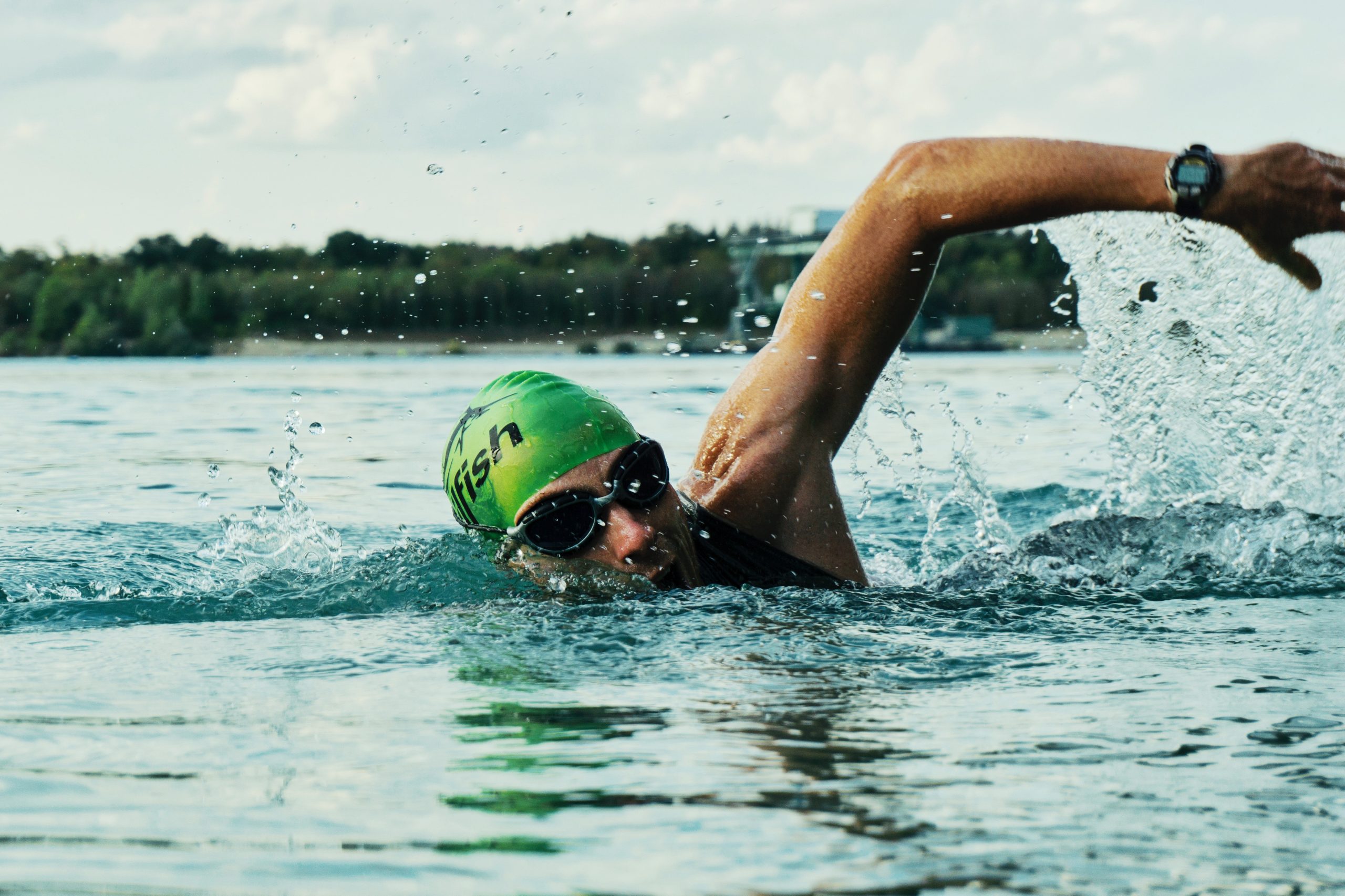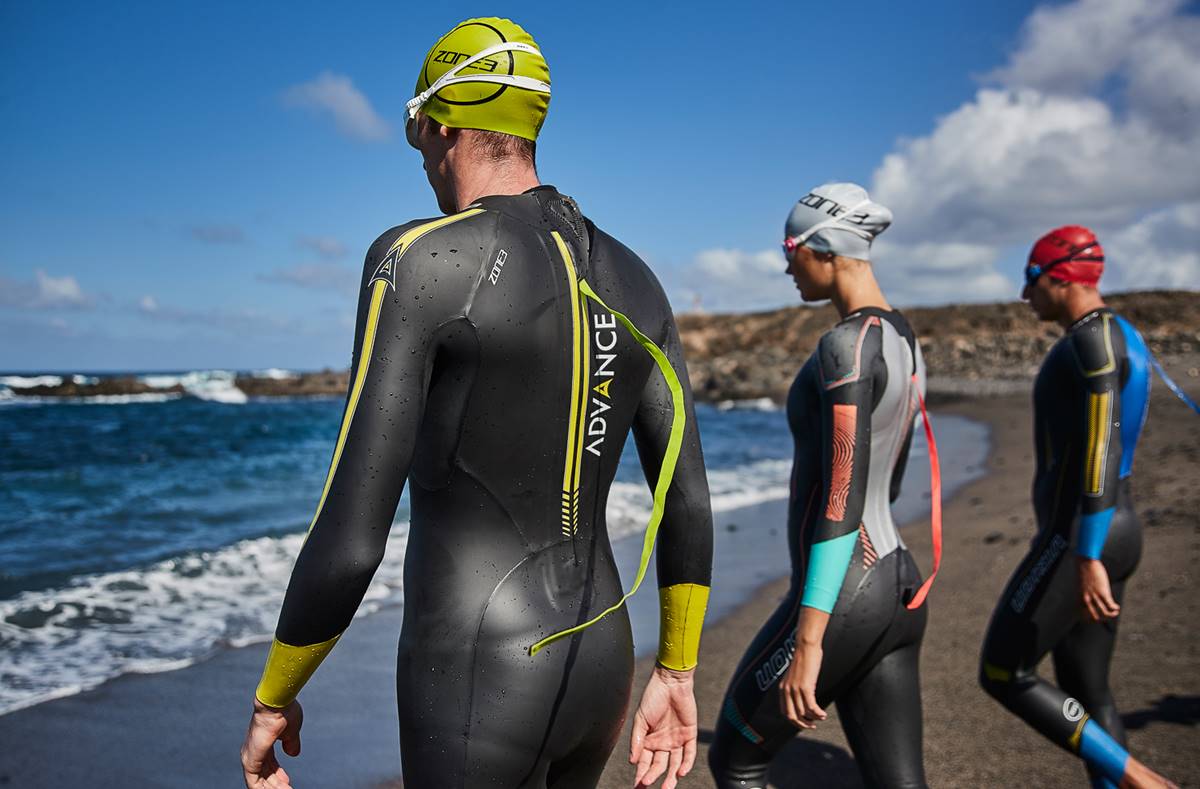

Featured
How Are Good Triathlon Wetsuits Made
Modified: October 3, 2023
Discover how top triathlon wetsuits are expertly crafted with featured technology, delivering superior performance and comfort for athletes.
Introduction
Welcome to the world of triathlon wetsuits, where performance and comfort meet technology and design. Triathlon is a demanding sport that combines swimming, cycling, and running, pushing athletes to their limits. In this grueling test of endurance, every second counts, and a well-designed wetsuit can make a significant difference.
Triathlon wetsuits are specifically designed to enhance an athlete’s performance in the water, allowing for greater speed, buoyancy, and flexibility. These wetsuits are made from specialized materials and feature unique design elements to meet the unique needs of triathletes.
In this article, we will explore the importance of good triathlon wetsuits and take a dive into how they are made. We will uncover the materials used, the design features, the construction process, and the rigorous testing and quality control measures that ensure a high-quality product. By the end, you will have a deeper understanding of what goes into creating a top-notch triathlon wetsuit.
Whether you are a seasoned triathlete or new to the sport, having a good wetsuit can greatly enhance your performance and overall experience. So, let’s dive in and discover the fascinating world of triathlon wetsuits!
What are triathlon wetsuits?
Triathlon wetsuits are specialized garments designed to be worn by triathletes during the swimming portion of the race. Unlike regular wetsuits used for surfing or diving, triathlon wetsuits are specifically tailored to meet the unique demands of the sport.
These wetsuits are typically made from neoprene, a synthetic rubber that offers excellent insulation and buoyancy. Neoprene is chosen for its ability to trap a thin layer of water between the suit and the body, which then warms up due to body heat and acts as an additional insulating layer.
Triathlon wetsuits are full-body suits that cover the arms, torso, and legs. They feature a tight and form-fitting design to minimize water resistance and drag in the water, allowing triathletes to swim more efficiently and conserve energy.
One of the key features of a triathlon wetsuit is its buoyancy. The neoprene material used in the construction of these suits provides added floatation, helping athletes maintain a horizontal position in the water and reducing the effort required to stay afloat.
Another essential characteristic of triathlon wetsuits is their flexibility. The neoprene material is stretchy, allowing for a wide range of motion in the shoulders and hips, which is crucial for efficient swimming strokes. This flexibility not only improves swim performance but also enables triathletes to transition seamlessly into the cycling and running stages of the race.
Additionally, triathlon wetsuits often feature specific design elements to enhance performance. These can include reinforced seams for durability, strategically placed panels to optimize buoyancy and flexibility, and hydrophobic coatings to reduce water resistance. Some wetsuits even have added features such as front zippers or adjustable neck closures for ease of wear and customization.
In summary, triathlon wetsuits are high-performance garments made from neoprene that provide insulation, buoyancy, and flexibility. They are designed to reduce drag, improve swim efficiency, and enhance overall triathlon performance. These specialized wetsuits play a vital role in helping triathletes conquer the challenges of the swim portion, setting them up for success in the grueling race ahead.
Importance of good triathlon wetsuits
When it comes to triathlons, every second matters. A good triathlon wetsuit can make a significant difference in a triathlete’s performance, providing advantages that can impact their overall race results. Here are some key reasons why having a high-quality wetsuit is important:
- Enhanced buoyancy: A well-designed triathlon wetsuit offers increased buoyancy, helping to lift the swimmer’s body in the water. This reduces drag and increases speed, allowing triathletes to swim faster with less effort. Improved buoyancy also helps maintain proper body position, reducing fatigue and allowing for more efficient strokes.
- Temperature regulation: Open water swimming can expose athletes to cold water temperatures. A good triathlon wetsuit provides insulation, trapping a thin layer of water between the suit and the body. This creates a thermal barrier that helps regulate body temperature, keeping triathletes warm and comfortable during the swim leg of the race.
- Reduced drag: The sleek and form-fitting design of a quality triathlon wetsuit minimizes water resistance and drag. This allows swimmers to glide through the water more efficiently, conserving energy and improving overall swim performance. The reduction in drag can result in faster swim times, giving triathletes an advantage in the race.
- Flexibility: A good wetsuit provides a balance of flexibility and support. The stretchy neoprene material allows for a full range of motion in the shoulders and hips, enabling triathletes to execute powerful and efficient swimming strokes. This flexibility is also essential during transitions, as it allows for quick and easy removal of the wetsuit for the cycling and running stages.
- Confidence and comfort: Wearing a well-fitting and high-quality wetsuit can boost a triathlete’s confidence and comfort in the water. The snug fit and buoyancy of the wetsuit provide a sense of security and stability, allowing athletes to focus on their technique and performance rather than worrying about the gear. Increased comfort leads to reduced anxiety and improved mental focus during the swim leg.
Overall, a good triathlon wetsuit is essential for triathletes looking to maximize their performance in the water. The enhanced buoyancy, temperature regulation, reduced drag, flexibility, and overall comfort provided by these wetsuits can significantly impact a triathlete’s swim performance, setting them up for a successful race.
Materials used in good triathlon wetsuits
A good triathlon wetsuit is made from carefully selected materials that offer the optimal combination of buoyancy, flexibility, insulation, and durability. Here are some of the key materials commonly used in the construction of high-quality triathlon wetsuits:
- Neoprene: Neoprene is the primary material used in triathlon wetsuits. It is a synthetic rubber known for its excellent insulation properties and flexibility. Neoprene traps a thin layer of water between the suit and the body, which then warms up due to body heat and acts as an additional insulating layer. The stretchy nature of neoprene allows for ease of movement and a comfortable fit.
- Jersey lining: Many triathlon wetsuits have a jersey lining on the inside, which provides added comfort and helps with moisture management. The lining wicks away sweat and water from the body, keeping the triathlete dry and reducing the risk of chafing or discomfort during the swim leg of the race.
- Coatings: Some triathlon wetsuits feature special coatings on the outer layer to reduce drag and increase hydrodynamics. These coatings, such as SCS (Super Composite Skin), create a smooth surface that allows water to slide off more easily, minimizing friction and improving swim speed.
- Seams and bonding: The seams of a triathlon wetsuit play a crucial role in its strength and water resistance. High-quality wetsuits use durable and flexible seams that are glued, stitched, or welded to ensure waterproof integrity. Some suits also utilize innovative bonding techniques to further enhance seam strength and reduce water ingress.
- Zippers and closures: Triathlon wetsuits often feature specialized zippers and closures for easy entry and a secure fit. Most suits have a zipper on the back, while others incorporate a front zipper for added convenience. Adjustable neck closures, such as Velcro or snap buttons, enable triathletes to customize the fit according to their preference and body shape.
These materials, combined with careful engineering and design, contribute to the overall performance and comfort of a good triathlon wetsuit. The right blend of insulation, flexibility, and hydrodynamics ensures that triathletes can swim with efficiency and ease, giving them a competitive edge in the water.
Design features of good triathlon wetsuits
Good triathlon wetsuits go beyond just materials and incorporate specific design features to optimize performance, comfort, and functionality. These design elements are carefully thought out to enhance a triathlete’s swimming experience. Here are some key design features commonly found in high-quality triathlon wetsuits:
- Anatomical fit: A well-designed wetsuit has an anatomical fit, meaning it contours to the shape of the body, following its natural curves and movements. This ensures maximum flexibility and minimizes drag by reducing excess material and folds in the wetsuit.
- Strategic paneling: Triathlon wetsuits often have strategically placed panels made from varying thicknesses of neoprene. Thicker panels are usually found in areas requiring more buoyancy, such as the chest and thighs, while thinner panels are used in areas that require greater flexibility, such as the shoulders and arms. This paneling design allows for an optimal balance of buoyancy and range of motion.
- Smooth skin surface: The outer surface of a good triathlon wetsuit is usually made with a smooth skin material. This smooth skin helps reduce drag by creating a sleek surface that glides through the water. The smooth skin surface also aids in moisture protection and minimizes water absorption, keeping the suit lightweight and efficient.
- Ergonomic neck and wrist seals: The neck and wrist seals of a wetsuit play a crucial role in preventing water entry and ensuring a comfortable fit. High-quality wetsuits incorporate ergonomic designs for these seals, utilizing materials such as neoprene or lycra with adjustable or seamless constructions. This helps minimize discomfort and chafing while providing a good seal against water infiltration.
- Reinforced seams: The seams of a triathlon wetsuit are often reinforced to ensure durability and prevent water leakage. Reinforcements can include glued and blind-stitched seams, which provide waterproofing, as well as specific stitching patterns to strengthen high-stress areas. The use of strong and durable seam construction is crucial to maintain the integrity of the wetsuit during demanding swim sessions.
These design features work together to create a high-performance triathlon wetsuit that offers optimal buoyancy, flexibility, and hydrodynamics. By incorporating innovative design elements, triathlon wetsuit manufacturers can provide athletes with a comfortable and efficient swim experience, allowing them to focus on their performance and achieve their best results in the water.
Construction process of good triathlon wetsuits
The construction process of a good triathlon wetsuit involves several meticulous steps and attention to detail to ensure its quality, durability, and performance. Here is an overview of the construction process of high-quality triathlon wetsuits:
- Pattern design: The process begins with the creation of a detailed pattern that serves as the blueprint for the wetsuit. The pattern is developed based on extensive research and understanding of the human body’s shape and movement. It takes into account the key design features and panel placement required for optimal performance.
- Material cutting: Once the pattern is finalized, the neoprene material is carefully cut into the different panels that will form the wetsuit. Precision cutting is crucial to ensure accurate dimensions and alignment, considering the varying thicknesses required for different areas of the suit.
- Assembly: The cut neoprene panels are then assembled using specialized sewing techniques or bonding methods. For glued and blind-stitched seams, a thin layer of adhesive is applied to the neoprene edges and then stitched together. These seams are highly durable and provide excellent water resistance. Some wetsuits also incorporate welded seams, where heat or ultrasonic technology is used to bond the neoprene together without the need for stitching.
- Reinforcements and accessories: During the assembly process, additional reinforcements and accessories are incorporated into the wetsuit. These include reinforced panels in high-stress areas like the knees and elbows, zippers, adjustable closures, and ergonomic seals for the neck and wrists. These reinforcements and accessories enhance the wetsuit’s durability, functionality, and comfort.
- Testing and quality control: Once the wetsuit is constructed, it undergoes stringent testing and quality control measures. This includes water pressure testing to ensure seam integrity, inspection of the overall construction for any defects, and fit testing to ensure it meets the desired sizing and comfort standards. Only wetsuits that pass these rigorous tests move forward for packaging and distribution.
Throughout the construction process, attention is given to every detail to ensure that the wetsuit meets the highest standards of performance, fit, and durability. Manufacturers employ skilled artisans and utilize advanced technologies to bring together the various components of the wetsuit, resulting in a high-quality product that empowers triathletes to excel in their swimming leg of the race.
Testing and quality control of good triathlon wetsuits
Ensuring the highest level of quality and performance, rigorous testing and quality control measures are integral to the production of good triathlon wetsuits. Manufacturers employ a variety of tests and inspections to guarantee that every wetsuit meets the highest standards. Here are some key aspects of testing and quality control for triathlon wetsuits:
- Water pressure testing: To assess the integrity of the wetsuit’s seams, it undergoes water pressure testing. This test involves subjecting the suit to high water pressure to check for any potential leaks or weak points. If any issues are detected, the wetsuit is rejected or repaired to ensure it meets the required standards.
- Stretch and flexibility testing: The wetsuit’s flexibility and stretch properties are evaluated through various testing methods. This includes stretch tests to measure the material’s elongation and recovery, as well as range-of-motion tests to assess the suit’s flexibility in key areas such as the shoulders and hips. These tests ensure that the wetsuit provides the optimal balance of flexibility and support for efficient swimming.
- Fit testing: Fit is an essential aspect of any wetsuit. Each wetsuit size is carefully checked for its consistency and accuracy against standardized measurements. Fit testing involves triathletes trying on the wetsuits to ensure a comfortable and snug fit without restriction or excessive looseness. This process ensures that athletes can move freely and perform optimally in the water.
- Material and component inspection: In addition to functionality and fit, the materials and components used in the wetsuit are thoroughly inspected for quality. This includes evaluating the neoprene thickness, checking for proper bonding or stitching of seams, assessing the durability of reinforcements, and verifying the functionality of zippers and closures. Any deviations or defects are identified and corrected during this inspection process.
- Field testing: Wetsuits often undergo field testing by professional triathletes or experienced swimmers. These athletes provide valuable feedback on the wetsuit’s performance, comfort, and durability in real-world conditions. Field testing helps identify any potential areas for improvement and ensures that the wetsuit performs optimally in competitive swim environments.
By subjecting triathlon wetsuits to comprehensive testing and quality control measures, manufacturers can guarantee that each wetsuit meets the highest standards of performance, durability, and comfort. These meticulous processes ensure that triathletes can trust in the quality of their wetsuit, giving them confidence and peace of mind to focus on their race and achieve their best performance in the water.
Conclusion
Triathlon wetsuits are essential gear for any triathlete looking to excel in the swim leg of the race. These specialized garments are designed with advanced materials and thoughtful design features to optimize buoyancy, flexibility, and hydrodynamics. From the construction process to rigorous testing and quality control measures, every aspect of a good triathlon wetsuit is carefully considered to enhance performance and provide comfort.
The use of high-quality materials such as neoprene, along with strategic paneling and smooth skin surfaces, ensures optimal buoyancy, reduced drag, and enhanced insulation. The anatomical fit, reinforced seams, and ergonomic closures contribute to comfort and durability during the intense demands of the race. Additionally, extensive testing and quality control procedures guarantee that each wetsuit upholds the highest standards of performance and reliability.
By wearing a good triathlon wetsuit, athletes can gain significant advantages in their swimming performance. The enhanced buoyancy, reduced drag, and improved insulation help triathletes swim faster and more efficiently, conserving energy for the subsequent stages of the race. These wetsuits also provide a sense of confidence and comfort, allowing athletes to focus on their technique and performance without distractions.
Whether you’re a seasoned triathlete or a beginner, investing in a high-quality triathlon wetsuit is a wise decision. It can make a noticeable difference in your swim performance and overall race results. By understanding the construction process, materials used, design features, and testing procedures, you can make an informed choice when selecting the perfect wetsuit for your needs.
So, dive into the world of triathlon wetsuits and make a splash with gear that is designed to take your swim performance to new heights. With the right wetsuit, you can unlock your full potential in the water and conquer the challenges of the triathlon with confidence and comfort.

